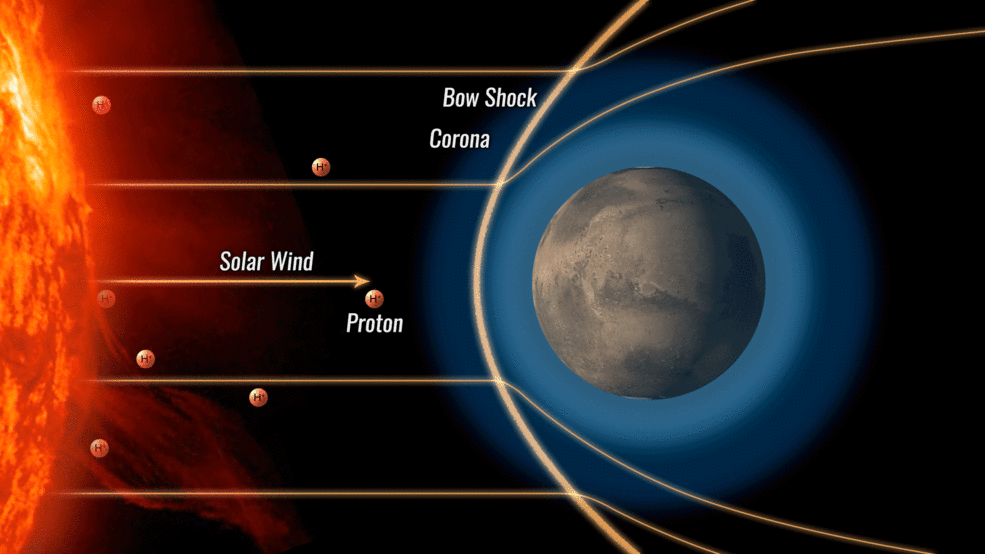This content has been archived. It may no longer be relevant
Auroras appear on Earth as ghostly displays of colorful light in the night sky, usually near the poles. Our rocky neighbor Mars has auroras too, and NASA’s MAVEN spacecraft just found a new type of Martian aurora that occurs over much of the day side of the Red Planet, where auroras are very hard to see.
Auroras flare up when energetic particles plunge into a planet’s atmosphere, bombarding gases and making them glow. While electrons generally cause this natural phenomenon, sometime protons can elicit the same response, although it’s more rare. Now, the MAVEN team has learned that protons were doing at Mars the same thing as electrons usually do at Earth—create aurora. This is especially true when the Sun ejects a particularly strong pulse of protons, which are hydrogen atoms stripped of their lone electrons by intense heat. The Sun ejects protons at speeds up to two million miles per hour (more than 3 million kilometers per hour) in an erratic flow called the solar wind.

This animation shows a proton aurora at Mars. First, a solar wind proton approaches Mars at high speed and encounters a cloud of hydrogen surrounding the planet. The proton steals an electron from a Martian hydrogen atom, thereby becoming a neutral atom. The atom passes through the bowshock, a magnetic obstacle surrounding Mars, because neutral particles are not affected by magnetic fields. Finally, the hydrogen atom enters Mars’ atmosphere and collides with gas molecules, causing the atom to emit ultraviolet light. (Courtesy NASA-GSFC/MAVEN/Dan Gallagher)
Read the complete story

